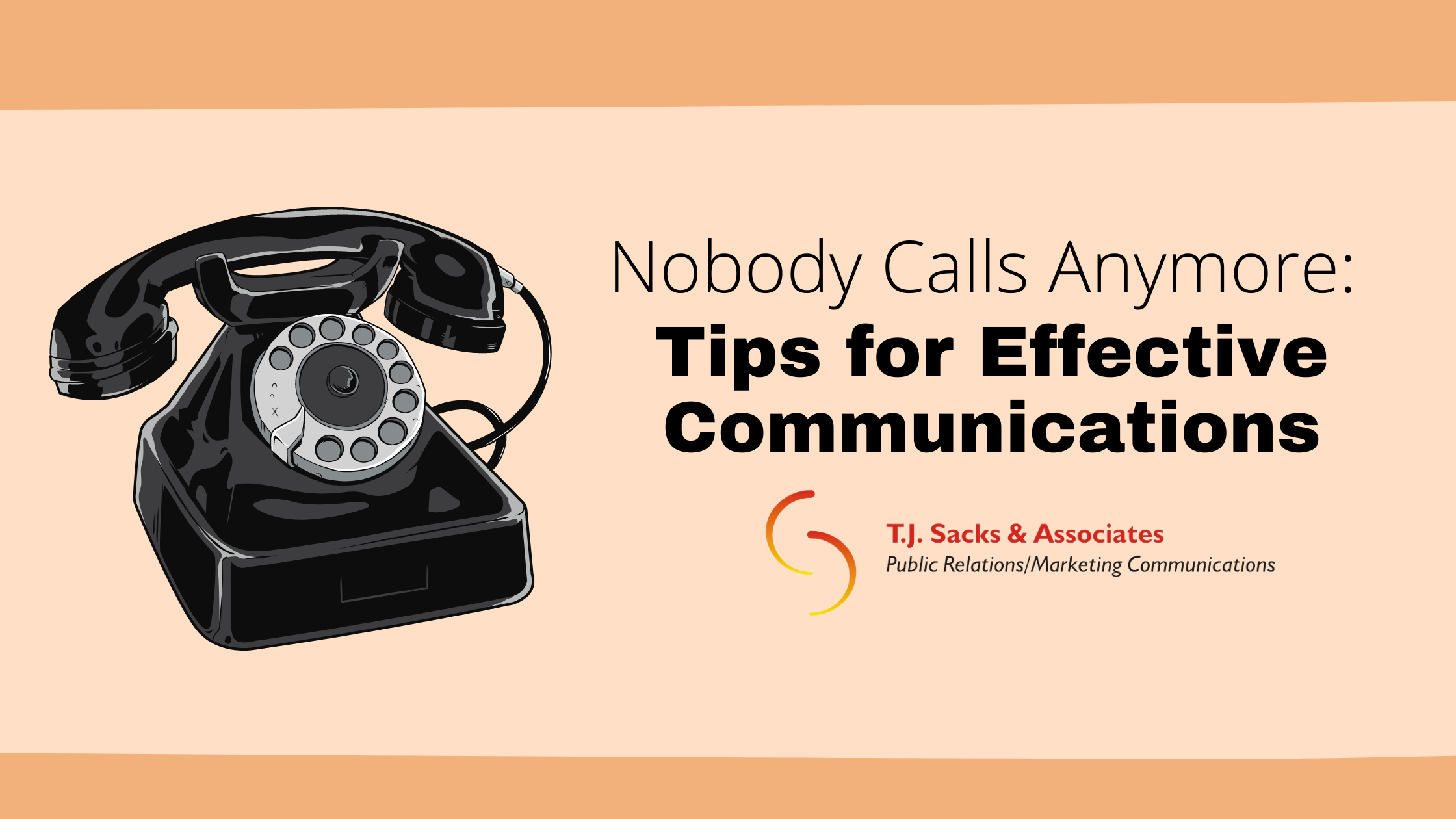
Social media is one of the most important tools a business can use to interact with its customers. Whether you sell products or services, social media is a key feature to reaching new customers and maintaining relationships with old ones. For small businesses, stepping into the digital world can be intimidating, so we here at T.J. Sacks & Associates have put together a short guide on how to get started!
Before diving into posting, you’ll need to decide what your main goals for social media will be. Posting without a goal in mind will result in random content that just doesn’t flow. Are you hoping to get more people to your company website? Encourage customers to stop by your new store? Sign up for classes that you’re offering? Your social media goals will likely be in line with your vision for the company, but it’s best to write them down and refer to them frequently so that your posts always reach toward those objectives. Reevaluate your goals every few months. They may change as your business grows.
Now that you know why your business will be using social media, you’ll need to decide where to post. This all depends on where your target audience is, and of course, what your goals are. Market research is your best friend at this step! Check out your competitors or companies that you’d like to emulate. What platforms are they present on? Where do they post most often? Where do they have the most followers or engagement? The most popular platforms are Facebook, Instagram, Twitter, Pinterest, and LinkedIn (B2B only). However, TikTok, is a fairly new platform that many businesses are finding success on. You may even find it beneficial to post on YouTube, Redditt, or Tumblr, if that’s where your target audience lives.
After deciding where to post, it’s time to create a social media strategy. The strategy should consist of the specific ways in which you will meet your social media goals. It might include posting user-generated content, beautiful photos, links to your website, or a mix of everything. Whatever you choose, make sure your strategy directly relates to your goals. For example, on a recent home furniture account, one of our goals was to build relationships with the interior designers who used our client’s items in their work. So, we reposted designers’ shots that featured the client’s pieces on Instagram and shouted out the designer, giving them publicity and showcasing how our pieces could be used in rooms and homes for other designers to see. We also aimed to increase website visitation, so we posted a variety of products and blog posts on Facebook, all linking back to the client’s website. For this client, each platform was governed by a different goal and strategy.
After developing your strategy, it’s time to log onto your accounts and start making a name for yourself. This all starts with the profile. When starting social media with a new client, we always curate their social profiles before any posting happens. Choose a simple, yet recognizable profile picture. Your company logo is usually the best option. Generally, you’ll want to be consistent across all accounts, as you’ll want your customers to easily recognize you everywhere. Your cover photo (where applicable) can be updated every month or so – there’s no strict rule here. We like to keep it consistent across all platforms, but that’s not necessary. The cover photos should represent what you do or feature an upcoming event. If you have a physical location, a photo inside the store is a great option! Next up, you’ll need to write a bio. Keep your bio short and to the point. Make what you do or sell and where you’re located if you mainly work out of a specific location VERY clear. No one wants to work hard to figure out what you do once they’ve been intrigued by your profile; do the work for them! The final, and arguably most important, step in curating your profile pages is the link to your website. Most social sites offer a specific spot for your website link, so make sure you use it. You should be linking customers to your homepage, not a random page on your website with products you’d like to sell (you can do that in your posts, but not on your profile).
Now that you’ve prepped, it’s time to start creating some content. Your content may be similar or completely different across all platforms. It all depends on your strategy. There aren’t many universal tips for content creation. You’ll need to use that market research mentioned earlier to figure out what type of content will be most successful in your field and what will best fit your strategy. Whether you choose to create your own content or repost user-generated content, you’ll need to write some original copy! There is a place for short and long form copy, but the most important thing to do is keep a consistent voice and personality for your brand, so decide what will work best for you and stick with it!
As far as scheduling goes, we always try to be a month ahead with scheduled posts. The world moves much faster than that though, so you should still be allowing time each day to edit, delete, or add new posts in order to stay relevant and comment on news in your industry. Using a social media calendar, like those offered by Loomly or Hootsuite makes scheduling much easier than it would be manually. We also suggest having at least three new posts per platform going out each week. You need to stay relevant and at the top of your customers’ minds. If you don’t continually produce new content, your brand will be swept away in the never-ending tide that is social media.
Ok, you’ve posted your content, all done right? Wrong! Posting is only the first step to having an effective social media presence. Interacting with your followers is just as important as creating new content. Like it or not, consumers expect to interact with brands at all hours via social media, so you need to make yourself available. Monitor comments, messages, tags, and mentions every day. You should reply to every comment to acknowledge and appreciate your current customers.
So that’s it! Follow these steps, and your business will be on its way to social media success! We know that social media can be quite time consuming, but it’s a necessary feature for any business that wants to grow and succeed. If this all seems like a bit too much to add to your plate, reach out to the experts at T.J. Sacks & Associates at info@tjsacks.com about running your social accounts for you. Happy posting!


